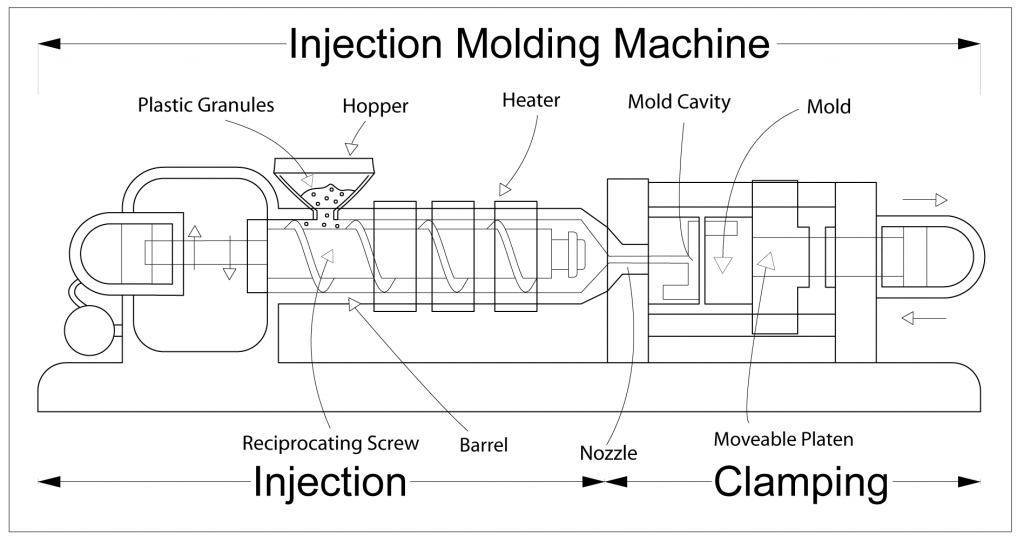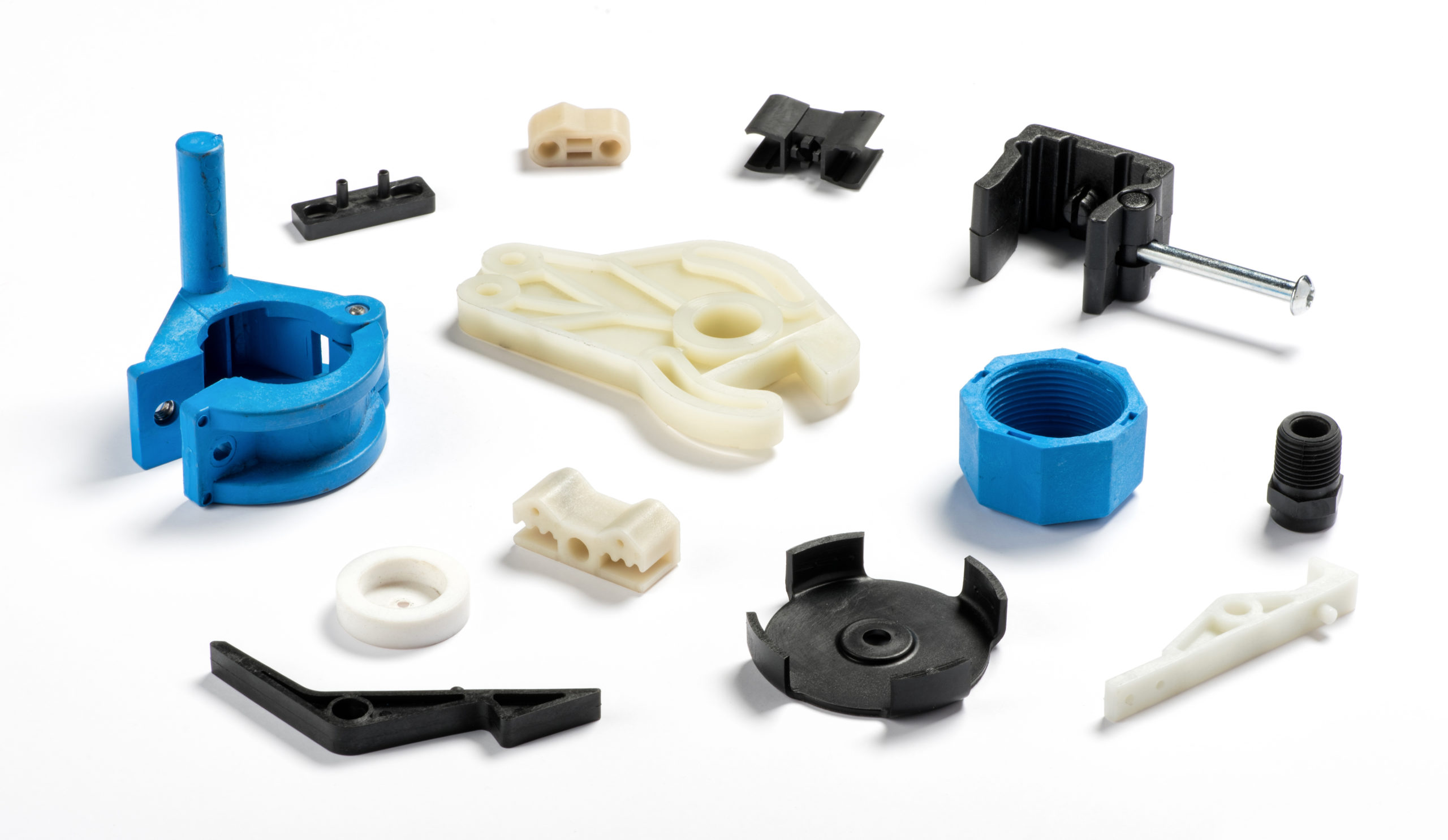Recognizing the Basics of Plastic Injection Molding Procedures
Plastic shot molding acts as a foundation of modern manufacturing, offering a systematic technique to generating intricate elements with precision. This process not only includes the fundamental actions of melting and injecting materials right into molds however additionally includes a nuanced understanding of various affecting variables, such as temperature and stress. As markets significantly demand effectiveness and high quality, the ins and outs of this approach end up being more important. Discovering these vital elements can disclose just how even small adjustments can result in significant improvements in production results, elevating inquiries about the capacity for technology in this well-known process.
What Is Plastic Injection Molding?
Plastic injection molding is an extensively used manufacturing procedure that changes thermosetting and thermoplastic products right into accurate and complicated shapes. This method is favored for its capability to create high volumes of identical components with extraordinary precision, making it a vital approach in various markets, including vehicle, durable goods, and clinical devices.
The procedure involves thawing the selected plastic product and infusing it right into a mold under high pressure. The mold and mildew, made to the specifications of the desired part, enables the liquified plastic to materialize as it solidifies and cools down. Once the product has hardened, the mold and mildew is opened up, and the ended up part is expelled.
Plastic injection molding uses several benefits, including reduced waste, consistency in manufacturing, and the capability to incorporate elaborate layouts that might be challenging with other making approaches. Furthermore, it sustains a wide variety of materials, each offering unique properties that can be tailored for specific applications. As sectors continue to introduce, plastic injection molding continues to be at the leading edge, enabling the advancement of advanced items that satisfy evolving customer needs.
The Injection Molding Refine
The injection molding process is an advanced technique that includes several vital stages to create top quality plastic components. Originally, plastic pellets are fed into a heated barrel where they are melted right into a viscous liquid. This molten plastic is then infused under high pressure right into a precision-engineered mold and mildew, which shapes the product into the preferred form.
Once the mold is filled up, the plastic is permitted to cool down and strengthen, taking the form of the mold cavity. Air conditioning time is crucial, as it influences the cycle time and the last properties of the molded part. After sufficient cooling, the mold opens, and the finished part is expelled utilizing ejector pins.

Materials Used in Injection Molding
Various materials can be used in the shot molding process, each offering one-of-a-kind homes that satisfy particular applications. The most commonly utilized materials consist of thermoplastics, thermosetting plastics, and elastomers.

Thermosetting plastics, like epoxy and phenolic resins, go through a chemical adjustment during the curing procedure, resulting in a stiff, stringent framework. These materials are optimal for applications calling for high heat resistance and architectural integrity, commonly utilized in vehicle parts and electric insulators.
Elastomers, consisting of silicone and rubber-based materials, provide flexibility and resilience. Their one-of-a-kind properties make them appropriate for applications that demand flexibility, such as seals and gaskets.
Additionally, specialty materials like bio-based plastics and compounds are obtaining grip for their ecological advantages special info and boosted performance attributes, broadening the extent of injection molding applications in different sectors. Recognizing the buildings of these products is important for selecting the ideal type for certain projects.
Benefits of Shot Molding
Shot molding stands apart as an extremely efficient production process that offers numerous advantages for generating complicated parts with precision. Among one of the most significant benefits is the capability to produce intricate layouts that would be challenging or impossible to accomplish with other approaches (Plastic Injection Molding). The procedure enables comprehensive functions and tight tolerances, guaranteeing top notch parts
Furthermore, injection molding is understood for its rapid production abilities, making it a perfect option for high-volume manufacturing. Once the mold and mildew is created, parts can be produced swiftly, minimizing preparations and increasing total performance. This effectiveness not just reduces manufacturing expenses but likewise provides an one-upmanship on the market.
The adaptability of products used in injection molding better enhances its allure. A large range of thermoplastics and thermosetting polymers can be utilized, permitting producers to pick materials that ideal fulfill their details needs, consisting of warm, toughness, and versatility resistance.
Moreover, the process lessens waste, as excess product can frequently be recycled and recycled. This sustainability aspect adds to a reduced ecological impact, making injection molding a responsible production selection. Overall, the benefits of injection molding make it a recommended technique for several markets.
Variables Affecting Product High Quality
While numerous elements can influence item quality in shot molding, recognizing these elements is essential for accomplishing optimal outcomes. Key elements include product selection, refining parameters, and mold layout.
Product selection plays a crucial duty, as different polymers display one-of-a-kind buildings that affect flowability, toughness, and thermal stability. Poor product selection can lead to issues such as bending or insufficient dental filling.
Processing parameters, consisting of temperature, cycle, and stress time, need to be carefully controlled. Variations in these setups can lead to inconsistencies partially dimensions and surface area finish. As an example, excessively high temperature levels might cause destruction of the polymer, while poor stress can cause brief shots.
Mold and mildew design is similarly essential, as it figures out the flow of the molten plastic and the cooling procedure. Poorly created molds may lead to uneven air conditioning rates, causing residual see this page anxieties and dimensional mistakes.

Final Thought
In conclusion, my explanation plastic shot molding acts as a vital manufacturing procedure that makes it possible for the effective production of high-grade components. Proficiency of the shot molding process, consisting of the understanding of products and the impact of numerous aspects on item quality, is important for achieving optimum outcomes. The benefits of this technique, such as cost-effectiveness and layout versatility, additional highlight its significance across several sectors, strengthening its status as a recommended option for high-volume manufacturing.
Plastic shot molding offers as a cornerstone of modern-day production, providing a systematic approach to creating complicated parts with precision.Plastic shot molding uses a number of advantages, consisting of minimized waste, consistency in manufacturing, and the capability to integrate intricate designs that might be testing with various other manufacturing methods (Plastic Injection Molding). As markets proceed to introduce, plastic injection molding continues to be at the center, allowing the advancement of sophisticated items that fulfill evolving consumer demands
The injection molding process is an advanced method that involves several crucial stages to produce premium plastic parts.In conclusion, plastic injection molding serves as an important production procedure that allows the effective manufacturing of high-grade parts.